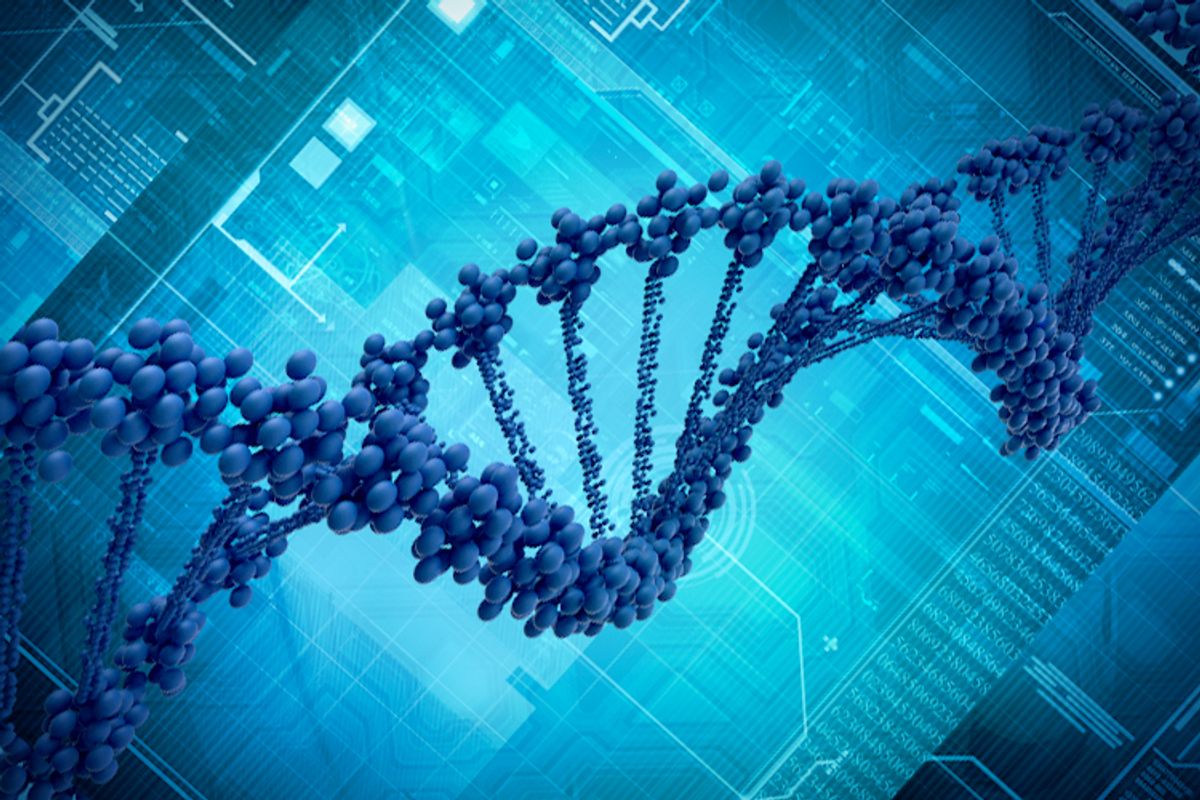In an incredible breakthrough at Scripps Research Institute in La Jolla, scientists created a living bacterium that contains lab-created "alien" DNA. The research was led by professor of chemical biology Floyd Romesberg, and the results of the 15-year effort were published yesterday in the journal Nature.
To wrap our brains around this mind-boggling discovery, we have to go back to high school biology and recall a few things about the building blocks of life. DNA (deoxyribonucleic acid) is a double helix of genetic code. When stretched out of its spiral-staircase shape, DNA looks like a ladder. The rungs are made up of nucleotides: sugars (deoxyribose), a phosphate group, and nucleic acid (or a base pair).
For all life on Earth the nucleobase alphabet reads like this: A (adenine), T (thymine), C (cytosine), G (guanine). These four bases paired together (A with T, and C with G) are the code that make it possible for proteins to be made and life to replicate -- it is life's code.
Scientists created two new bases, or "letters" in the DNA alphabet, and then were able to have it accepted in a living cell. According to the New York Times, the scientists at Scripps are calling the two new nucleotides X and Y. The two pair with one another.
Yep, take it all in. In a laboratory, in California, life was created that contains genetic code that this world has never seen before.
Creating "alien" bases is not a new concept. According to Scientific American, the question has been around since the 1960s. In 1989, Steven Benner, then at the Swiss Federal Institute of Technology in Zurich, created what Benner called "funny letters." According to Scientific American, in a test tube, Benner and his team added modified cytosine and guanine into DNA molecules.
Romesberg's "funny letters," to use Benner's term, were even more alien -- hardly looking like natural base pairs. According to a Nature articlepublished on Scientific American:
"In a 2008 paper, and in follow-up experiments, the group reported efforts to pair chemicals together from a list of 60 candidates and screen the 3,600 resulting combinations. They identified a pair of bases, known as d5SICS and dNaM, that looked promising. In particular, the molecules had to be compatible with the enzymatic machinery that copies and translates DNA."
In test tubes, the team was able to get the foreign base pair to copy itself, but the real challenge was to get a cell to accept this "alien" DNA. To do that they used a complicated method to "feed" foreign DNA to a specifically engineering E. coli bacterium.
The bacterium accepted the "alien" DNA, and when it ran out of "alien" nucleotides, the bacterium replaced them with natural ones. One of the researchers, Denis Malyshev, sees that as a safety mechanism so that alien DNA can be turned off and not escape the lab.
There are many incredible implications raised by this discovery. According to the New York Times, a company has already been created by the researchers to use the breakthrough to "develop new antibiotics, vaccines and other products." However, the Times notes that they are a long way off from this reality.
Foreign base pairs like X and Y could also be used to create new proteins, which among other things could be used in creating new drugs/treatments for disease.
The New York Times notes that the discovery could also spur backlash from people who fear human manipulation of biological systems, and calls for greater regulation of synthetic biology.
Dr. Benner, who is now doing research at the Foundation for Applied Molecular Evolution in Gainesville, Florida, is looking ahead. He sees the next step as furthering the research to make cells that can can reproduce the foreign base pairs on their own.
The breakthrough also raises the possibility that potential life outside of Earth is not made up of the same genetic material that we are. Closer to home it gives scientists insight to our own nucleotides -- A, T, C, G -- and why we evolved to only have these four.

Shares